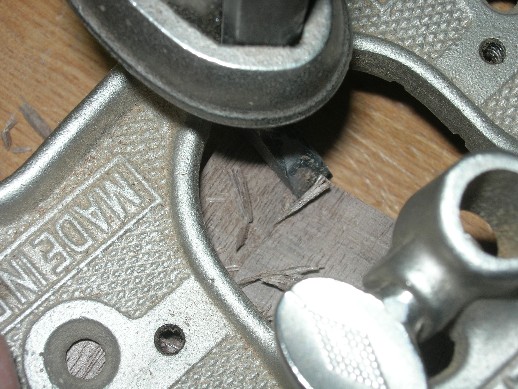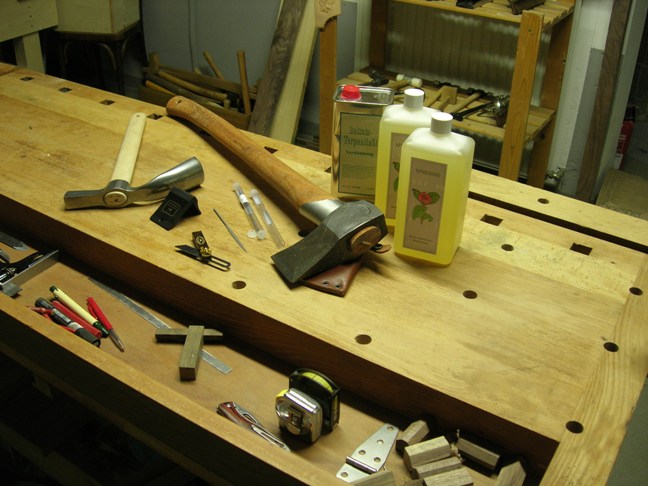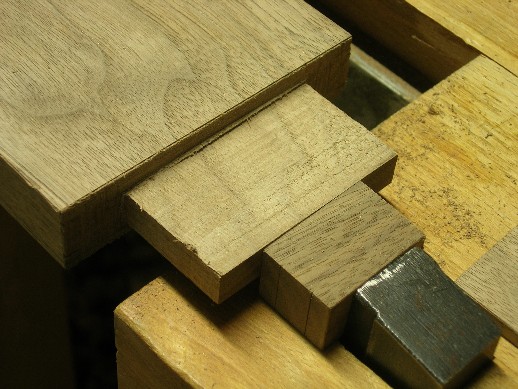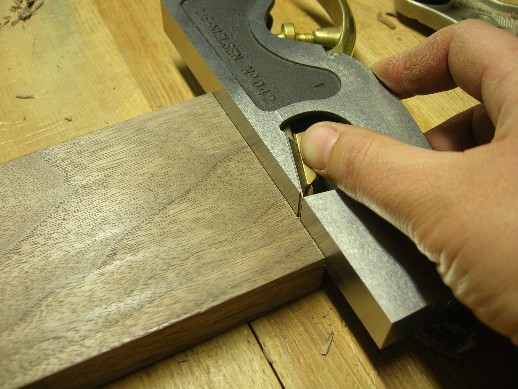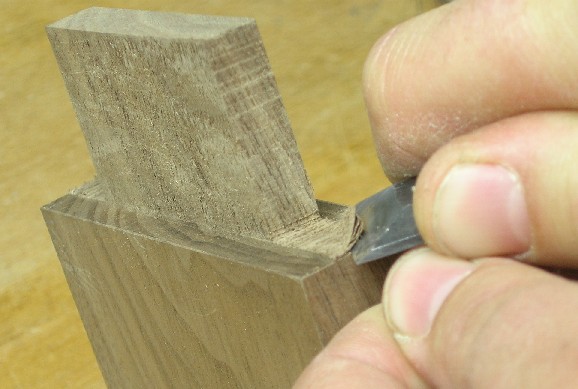Paul,
Most times, I'm working with legs that are not real thick--like maybe they're 1-1/2" to 1-5/8" square (~37-40mm). In this situation, I'm trying to maximize the insertion of the rail tenons, given that there will be tenons coming in at right angles in the other face. The greater the insertion, the greater the glue area.
To maximize the insertion, the tenon will need to be located toward the outer part of the leg. But how far out? Well, I would say that the leg mortises will need to be inset 1/4" to 5/16" (say 6.5 to 7.5mm) from the outside of the leg, so they're surrounded by enough meat that they won't get blown when you chop the mortise, and so the leg doesn't distort outward or split when you push the tenons into the mortises. Now if the legs are thicker than this, these numbers aren't so critical, and you can come in further, say 9mm, and still get long tenons in there.
But in any event, what controls is your judgment about how far in from the edge of the leg you want the mortise to be. As soon as you decide (a) the mortise location, and (b) the inset of the panel from the outer leg face--then the location of the tenon in the width of the panel is specified.
So, suppose it's a 40mm square leg, and a 2mm inset of the panel from the leg face (to create a shadow line). I would inset the mortises 7mm from the outer edge of the leg, and use 6mm to 7.5mm tenons (approx., depends on available chisels!).
So this would mean that the opposing tenons would meet in the leg, at a max. insertion of 40mm-7mm = 33mm, with the ends of the tenons mitered where they meet.
In general, the tenons would be offset in the width of the panels, to satisfy the mortise location and the offset from the leg. In the above case, the tenon's outside shoulder would be, say, 7mm (mortise inset) minus 2mm (panel inset from leg) = 5mm. So if the panel is 18mm, then the outer shoulder of its tenon would be 5mm, then say a 7.5mm tenon, then a 5.5mm inside shoulder.
All of these measurements, once decided, would be marked by gauge, of course, with no need to keep track of numbers in marking out.
Wiley




